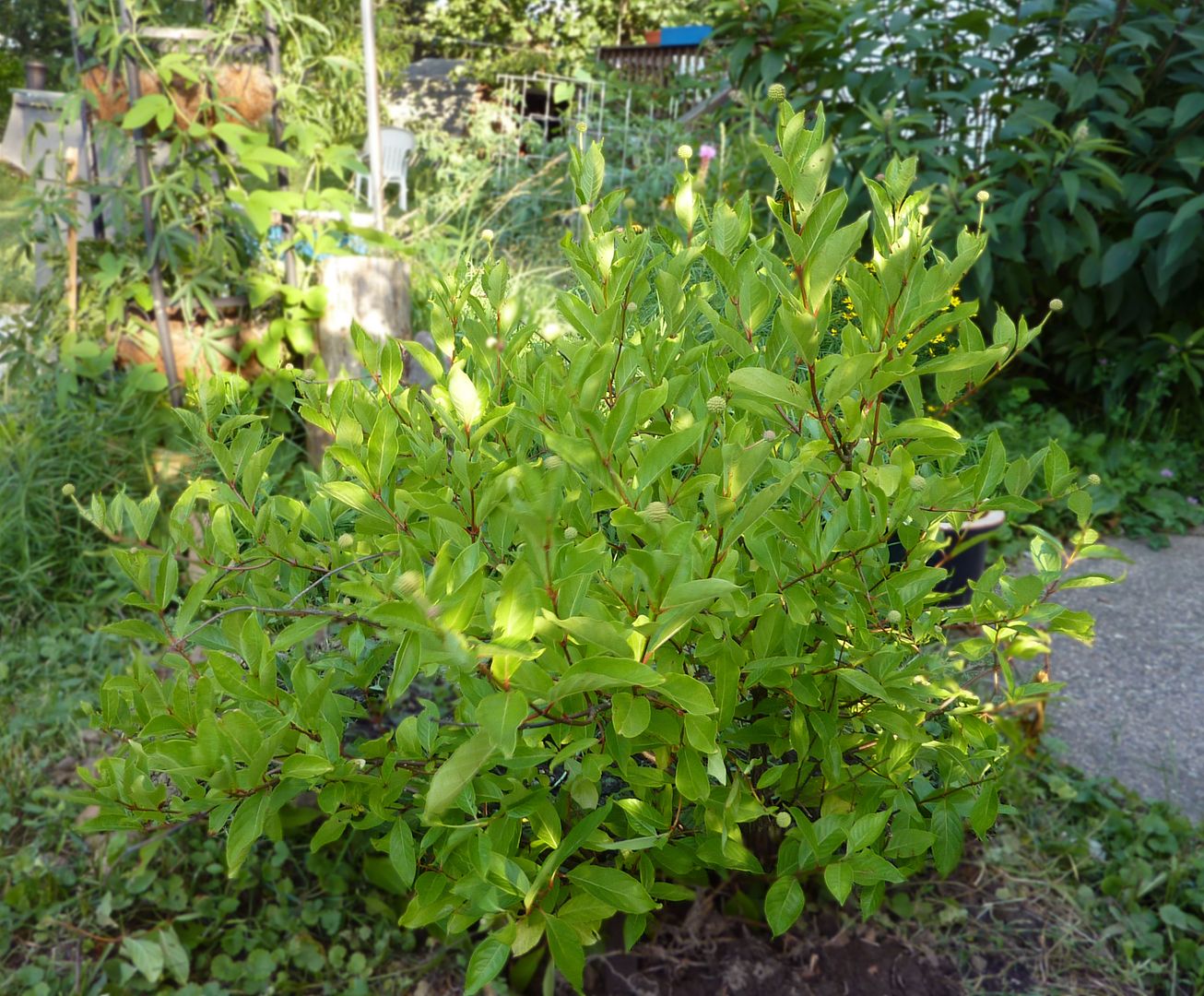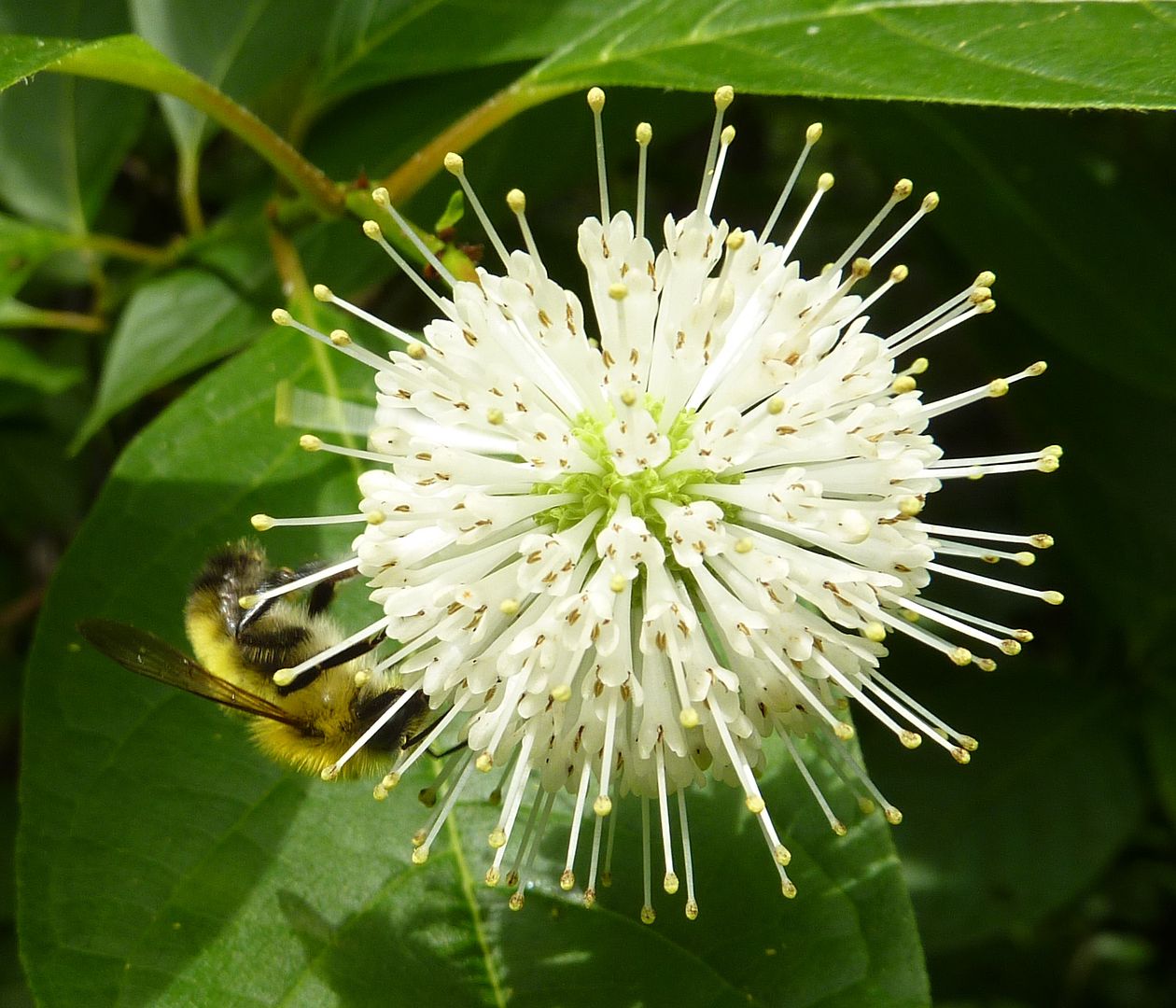Native Plants of the Northeast: A Guide for Gardening and Conservation
Having never seen either plant in person it was quite the mistake to make. Both have leaves forming in pairs, both get to be about the same size, and the only thing to really alert me I'd planted the wrong thing was the stem color. Buttonbush has a red stem while Sweetshrub is quite green.
The Sweetshrub went into shock the first year and only produced new growth instead of growing on existing wood. Sweetshrubs don't like it to wet while Buttonbushes can tolerate being 4 feet of water. Sweetshrubs burn up a bit in full sun so I'd say they benefit from some partial shade. (Perhaps afternoon shade)? So I'd planted it in the full sun spot with almost no drainage in the yard, and no wonder the poor thing went into shock. The second year it reclaimed the wood thankfully. Finally we're on the third year and it's started flowering. From what I've seen on the internet they're nice looking shrubs at least.
It's not on my favorite list at all and I've since transplanted it. Besides some wilting on the first day it's taking the whole move really well. I expected some loss of flowers or leaves or for it to die all together. But really it's just doing great. It's still flowering even.
So that brings us to the second part of my story.
How I bought a Buttonbush.
Earlier today I went to the nursery and bought one. The End.
Popes is my favorite nursery. They have a huge selection of plants at mostly wholesale prices. I could start a landscaping business around that nursery and make a fortune with odd hard to find landscaping plants. The lady there was thrilled I wanted to buy one. Apparently it's not something people ask for often. Looking at the label she made probably explained why. It read "grows 25' tall and around." I pointed out the mistake; 10' is more accurate. She actually had one growing there on the property they'd planted about 10 years ago. We went over to it and sure enough it was only 4' tall and around.
So that was my feel good moment of the day. I recommended she treat it as though it were a native Butterfly Bush because it really is in many ways. The flowers occur in clumps, or in this case balls, they're tube shaped, and even lightly scented but not as pungent as a Butterfly Bush. They're more sweet smelling but not as strong, unfortunately. It's even the host plant to at least one Giant Silk Moth. I hope to prove how great of a plant this is when mine starts blooming real good.
If nothing else it's great for the bees at least.


